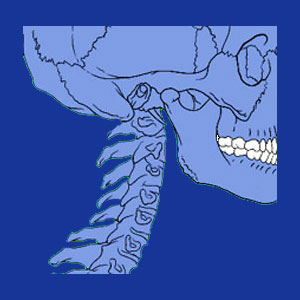
Arthritis in the neck is a common consequence of aging found in most adults past the ages of 40 to 50. The arthritic processes affect almost all of our body’s major joints and the spinal joints are no exception. Lumbar arthritic change is almost guaranteed, particularly in the area near the lumbosacral juncture. Cervical arthritic change is also almost universal, particularly in the middle to lower cervical levels and at the cervicothoracic juncture.
Arthritis neck pain is not a given, even when the anatomical changes are significant. This is because the osteoarthritic alterations are a normal part of getting older and most do not enact any significant or widespread pain or neurological effects. However, in some instances, serious symptoms can result when arthritis affects nerve structures or causes mechanical pain due to bone on bone contact.
This article will detail the possible symptoms of cervical arthritis in its various forms.
Arthritis in the Neck Symptoms
Most osteoarthritis will cause no symptoms, or only minor symptoms, as long as the structural changes in the bones and joints remain minor or moderate. Significant changes to these anatomical structures may enact more fearsome expressions and might even produce chronic pain under the following circumstances:
Spinal stenosis may result from osteophytes or from general arthritic debris within the central canal. Stenosis can cause localized and radiating pain, as well as far-ranging neurological dysfunction. Some cases require surgical intervention to resolve.
Neuroforaminal stenosis can also be caused by general arthritic debris narrowing the foramen or by specific bone spurs compressing the spinal nerve roots. Just because the foramen are decreased in size means nothing. In order for symptoms to occur, the nerve will have to be constricted by the arthritic processes.
Osteoarthritis can enact endplate, and general vertebral changes, which may result in bone to bone contact when the spine is mobilized.
Arthritis can affect the spinal facet joints, causing facet joint neck pain.
Arthritis Expressions in the Cervical Spine
Arthritis can be documented via various forms of diagnostic imaging. If you are over the age of 40 and are diagnosed with mild to moderate arthritic changes in your spine, you are completely normal. These alterations are virtually universal, particularly in the regions noted earlier in this article.
Most mild to moderate arthritis in the neck will not cause pain or will only cause minor localized discomfort. If severe arthritic change exists at the endplates, or within the spinal joints, increased bone contact and interaction may occur, potentially causing rather sharp pains in a localized area.
In some cases, these arthritic changes will resolve with time, while in others, treatment may be required to bring relief. If nerve compression or spinal cord compression occur due to central or foraminal stenosis, then treatment is likely to be needed. Usually, conservative care will do little, if anything, to provide a cure and patients may require neck surgery if they are to fully recover.
Arthritis in the Neck Help
We correspond with so many patients who demonstrate the normal degree of arthritic change which should not be an issue, yet these expected changes are the suspected reason for many neck pain complaints.
In some patients, the evidence correlates and the symptoms match the diagnosis, but in others, there is no reason to believe that the minor arthritis is problematic. A great number of patients have pain which does not match the expected location, expressions or severity of pain. Many also have areas of pain which are far too large and wide-ranging to possibly come from the diagnosed arthritic activity.
When nerve symptoms are implicated, as well, the complexity of proper diagnosis gets even greater. This is why it is so vital to fully understand how arthritis can cause pain and how it may be blamed unjustly for eliciting symptoms.
To learn more about arthritis neck pain, talk to your orthopedist, or consult with a spinal neurologist if spinal stenosis or neuroforaminal stenosis have been suspected.
Neck Pain > Arthritis Neck Pain > Arthritis in the Neck





